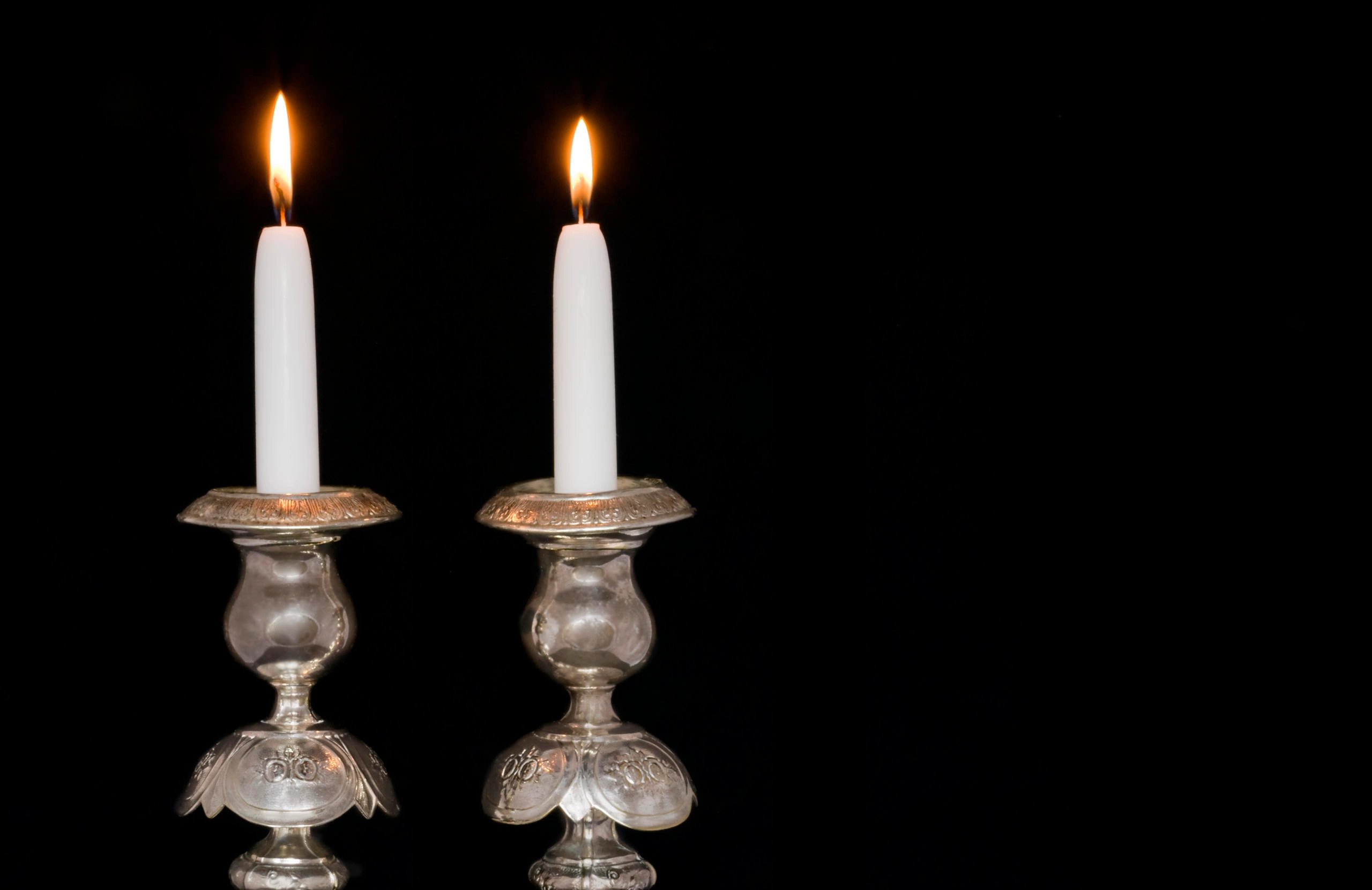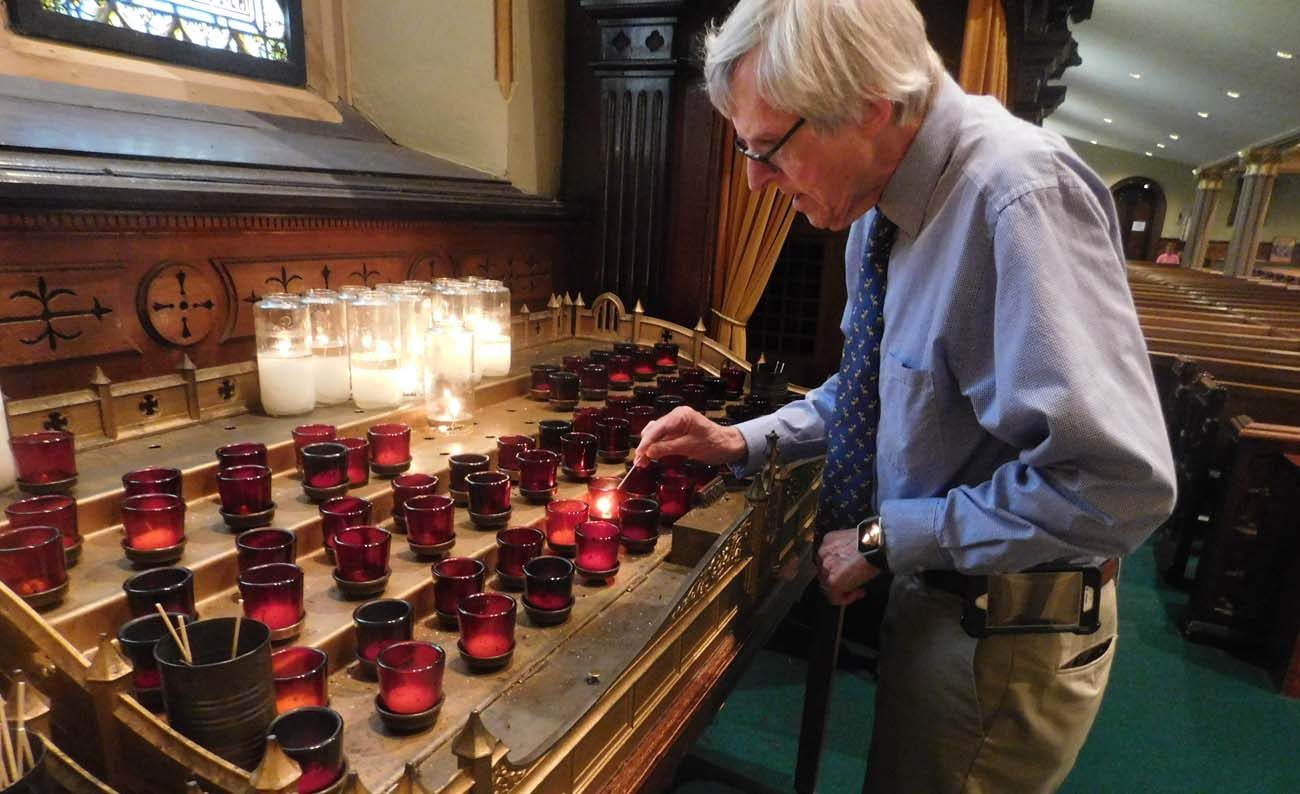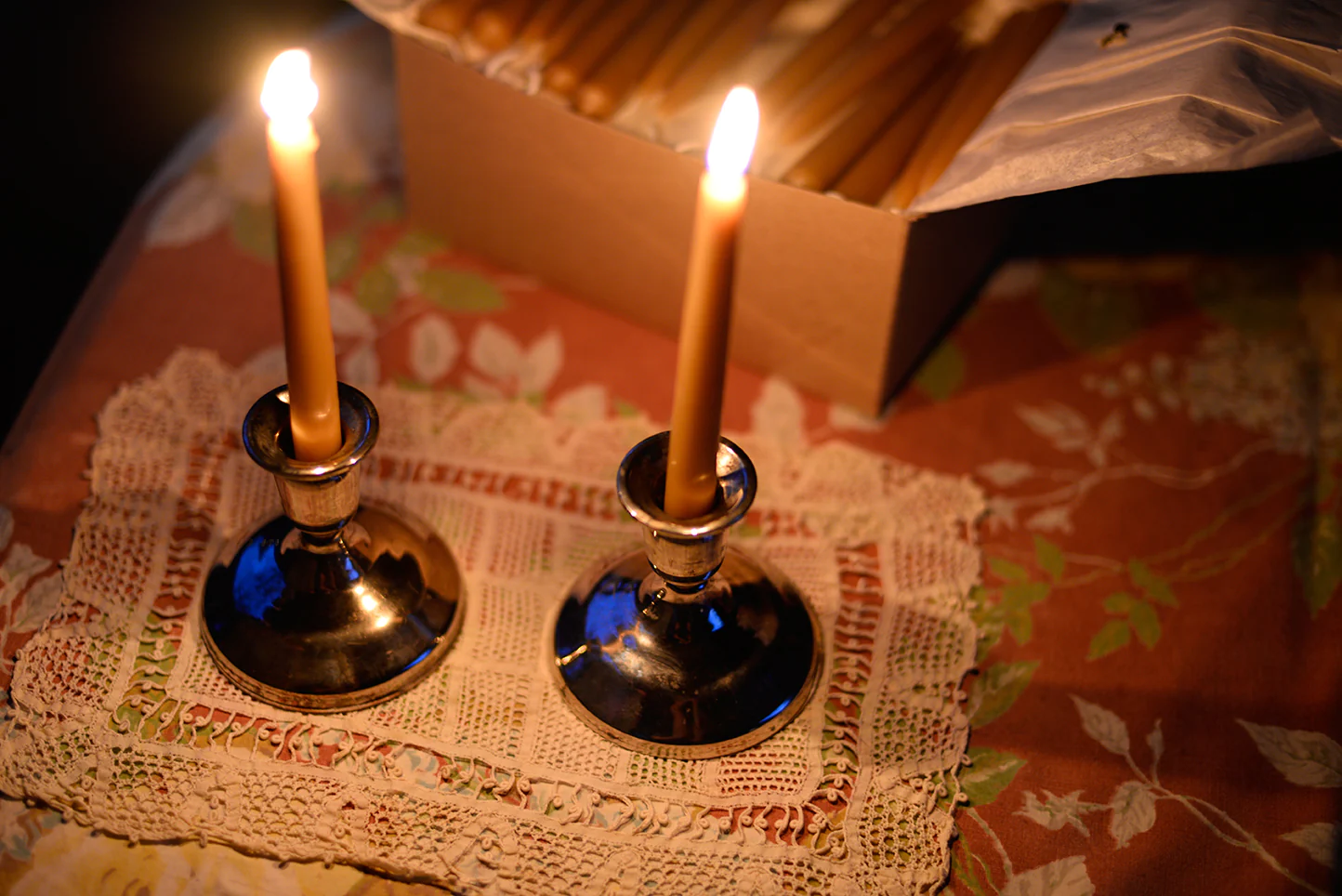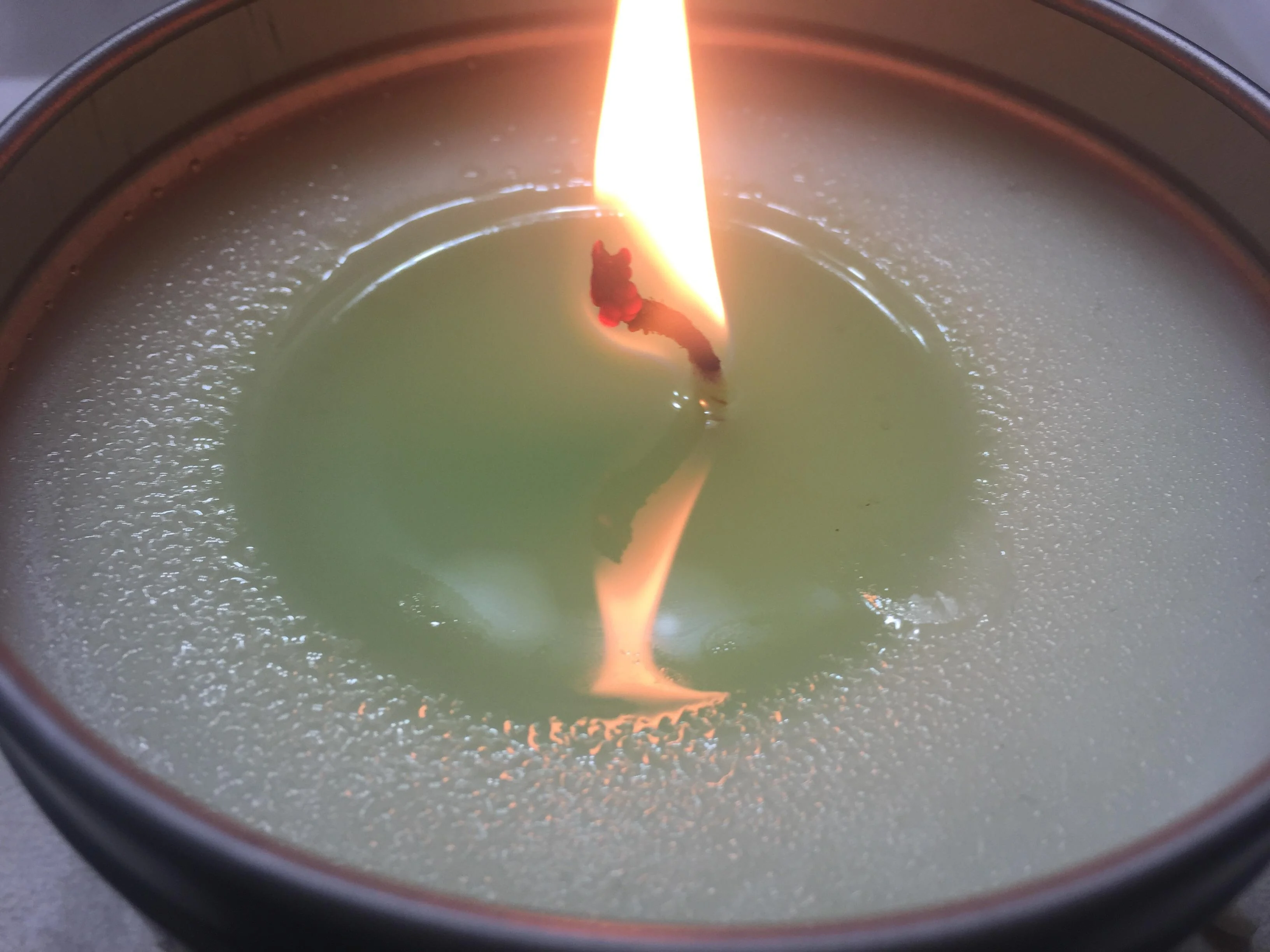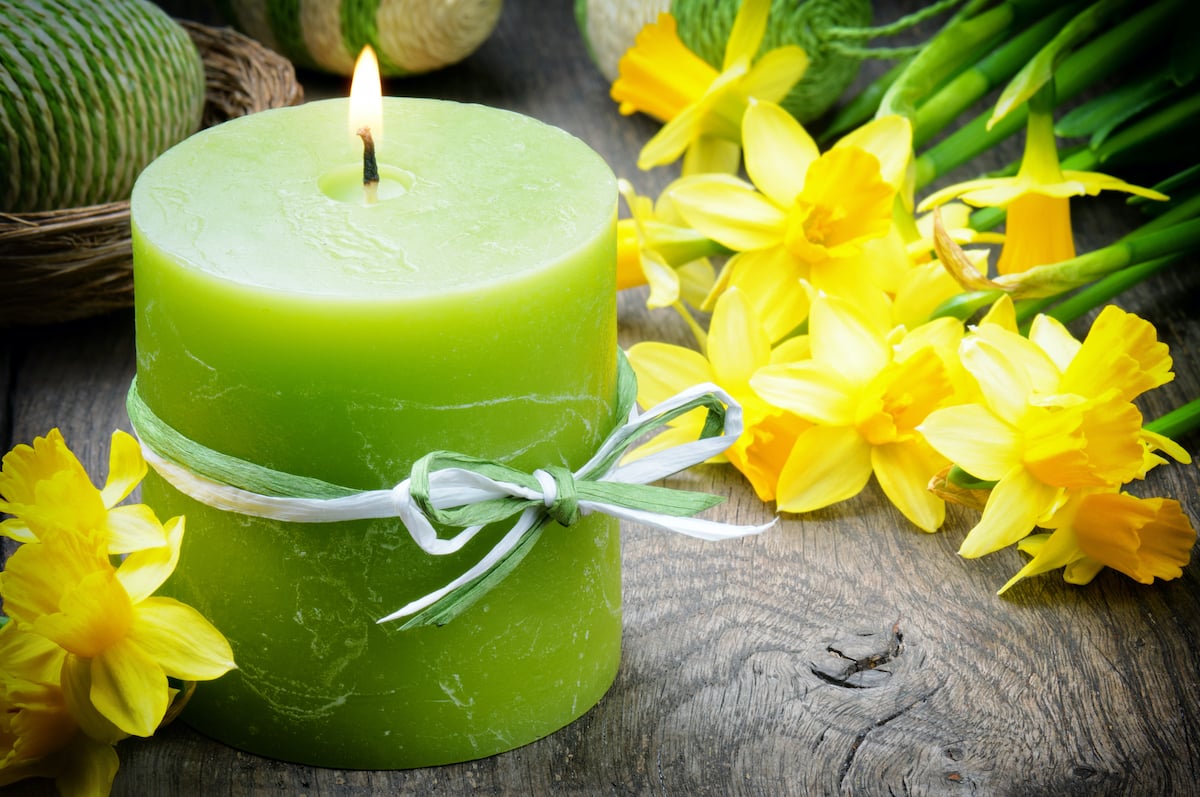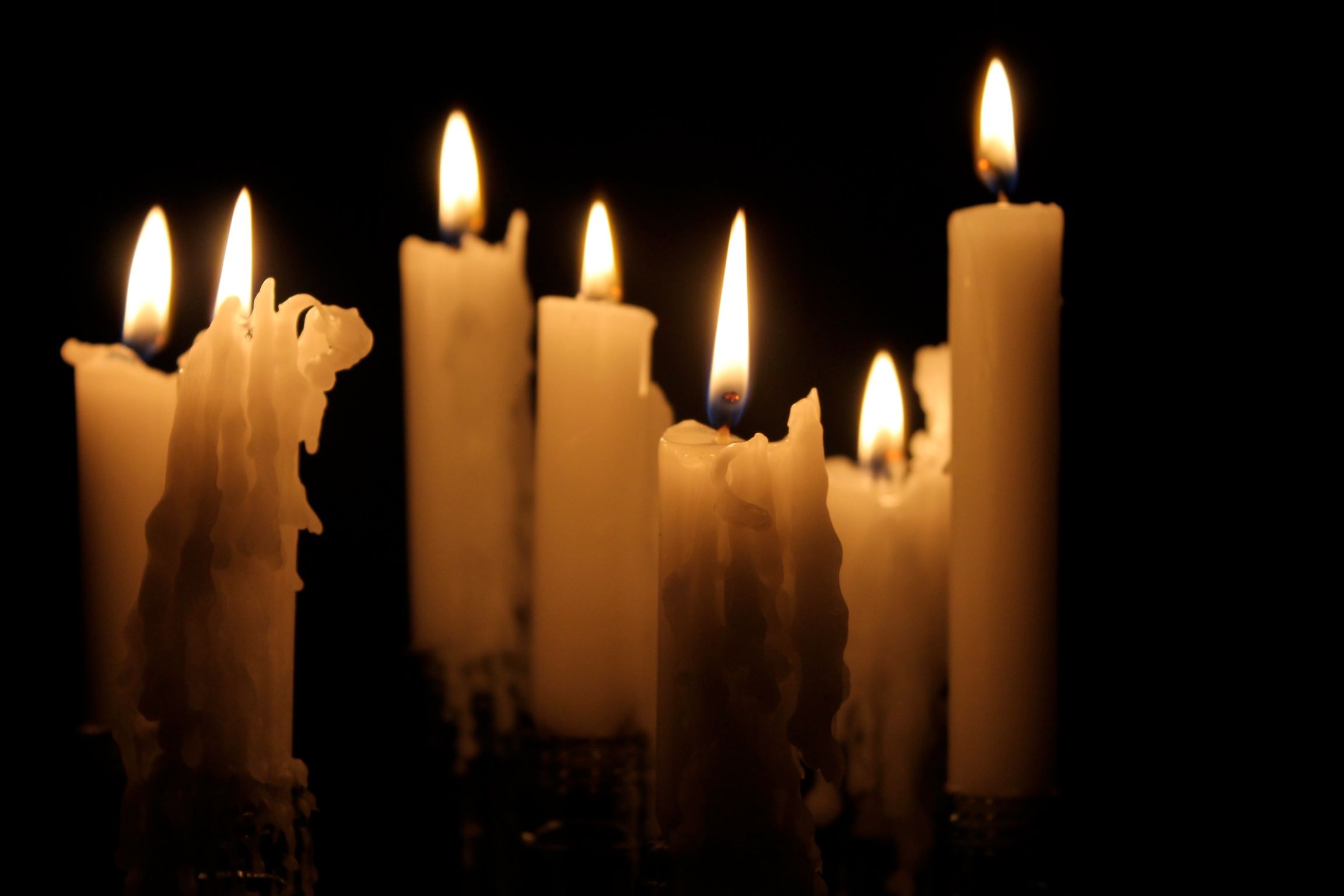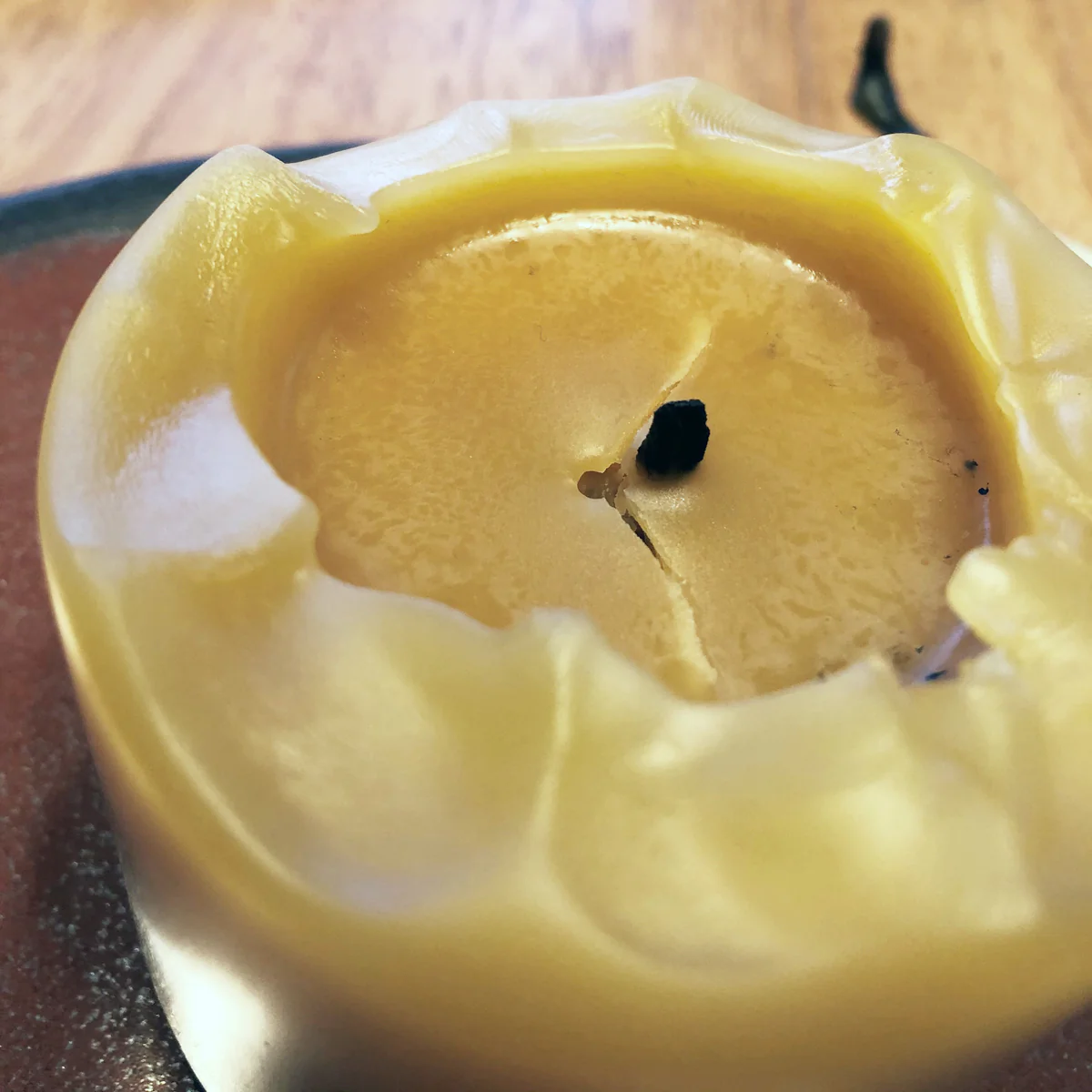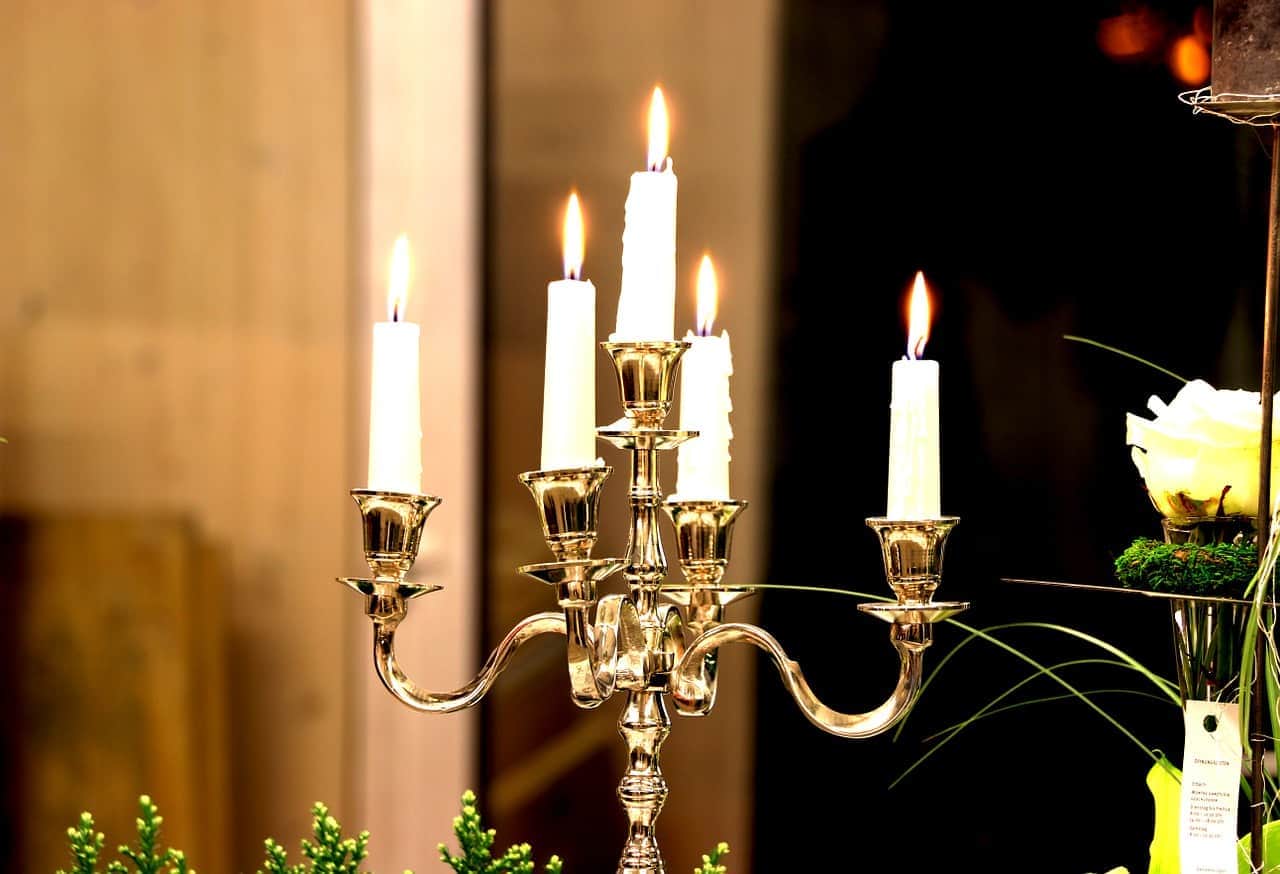

Articles
Why Do We Light Candles On Shabbat
Modified: December 7, 2023
Discover the significance of lighting candles on Shabbat with our insightful articles. Explore the traditions, symbolism, and cultural meanings behind this cherished practice.
(Many of the links in this article redirect to a specific reviewed product. Your purchase of these products through affiliate links helps to generate commission for Storables.com, at no extra cost. Learn more)
Introduction
Shabbat, the Jewish day of rest and spiritual rejuvenation, is a cherished and sacred time for Jewish communities around the world. One of the prominent customs observed during Shabbat is the lighting of candles, which holds great significance in Jewish tradition. The act of lighting candles on Shabbat not only adds a touch of beauty and warmth to the festive atmosphere but also carries profound spiritual symbolism.
The lighting of Shabbat candles is a time-honored ritual that dates back centuries. It serves as a tangible expression of the reverence and honor bestowed upon the Shabbat, a day set apart from the rest of the week. In this article, we will delve into the historical origins, symbolic meaning, and customs associated with the tradition of lighting Shabbat candles.
This sacred practice of kindling Shabbat candles serves as a way to usher in the holy day and create an atmosphere of sanctity. It represents the separation between the mundane weekday activities and the sacred time of rest that is Shabbat. The gentle glow of the candlelight adds an element of tranquility and serenity to the atmosphere, inviting individuals and families to detach from the distractions of the outside world and focus on spiritual contemplation and connection with loved ones.
Key Takeaways:
- The act of lighting Shabbat candles goes beyond practical illumination, serving as a conduit for spirituality, connection, and sanctity. It symbolizes the distinction between the mundane and the sacred, inviting individuals to ignite their inner sparks of holiness and radiate warmth and love to others.
- Shabbat candle lighting embodies the spiritual essence of Jewish tradition, fostering mindfulness, gratitude, and unity among Jewish communities worldwide. It serves as a tangible expression of commitment to honoring the Shabbat and sanctifying the day, creating an atmosphere of peace, rest, and spiritual rejuvenation.
Read more: Why Do We Light Candles For The Dead
The Importance of Shabbat Candles
Shabbat candles hold immense importance in Jewish tradition and play a significant role in the observance of Shabbat. Lighting the candles is regarded as a mitzvah, a divine commandment, and is considered a fundamental aspect of the Shabbat experience. The act of kindling the candles carries multiple layers of meaning and holds both practical and spiritual significance.
From a practical standpoint, Shabbat candles serve as a source of illumination during the Shabbat. Lighting candles before the onset of Shabbat ensures that there is a warm and inviting glow in the home, as it is forbidden to turn on or off any electric lights during this holy time. The candles provide a symbol of warmth and hospitality, creating an atmosphere of coziness and relaxation.
On a spiritual level, the act of lighting Shabbat candles is deeply ingrained in Jewish tradition. It is believed to symbolize the commandment in the Book of Exodus, where it says, “Remember the Sabbath Day and keep it holy.” By kindling the Shabbat candles, individuals are fulfilling this biblical injunction by sanctifying and dedicating the day to God.
The candles also represent the inner spiritual light within each person. Just as the candles illuminate the physical space, they are also a reminder to illuminate our inner selves with acts of kindness, love, and compassion. Shabbat candles are a symbol of the divine presence, and their flickering flames remind us of the spiritual connection we have with God and our fellow human beings.
Furthermore, the lighting of Shabbat candles has the power to transform the ordinary into the extraordinary. It elevates a regular Friday evening into a sacred and holy time. The beautiful glow of the candles sets the stage for prayer, reflection, and the cessation of mundane activities. It serves as a visual cue to pause from the busyness of everyday life and embrace the spiritual and emotional nourishment that Shabbat brings.
Overall, the importance of Shabbat candles lies in their ability to foster a deep sense of spirituality, unity, and sanctity in the Jewish community. The act of kindling the candles resonates with the core values of Shabbat – rest, connection, and rejuvenation. It is a powerful symbol that encompasses the essence of Shabbat and creates an ambiance that facilitates a closer connection with God and with one another.
Historical Origins of Lighting Candles on Shabbat
The practice of lighting candles on Shabbat dates back to ancient times and has its roots in Jewish tradition and biblical teachings. While the exact origins of this ritual are not explicitly mentioned in the Torah, historical records and rabbinic literature provide insights into the development of this sacred practice.
In the Book of Exodus, the obligation to observe Shabbat is stated, but the specific requirement to light candles is not mentioned. It is believed that the tradition of lighting candles on Shabbat emerged during the period of the Second Temple, around the time of the Hellenistic period. During this time, the Jewish people were experiencing external pressures from the rule of foreign empires, which led to the need for additional rituals and symbols to strengthen Jewish identity and observance.
Rabbinic literature, particularly the Mishnah and Talmud, shed light on the evolution of the practice of lighting candles on Shabbat. The Mishnah, compiled during the second century CE, includes detailed discussions about the laws and customs of Shabbat observance. It mentions the requirement to light candles before the onset of Shabbat and the guidelines for doing so.
During the time of the Talmudic period, around the third to sixth centuries CE, the practice of lighting candles became more widespread and was firmly established as a central aspect of Shabbat observance. The Talmudic sages expanded upon the earlier teachings, clarifying the specifics of candle lighting, including the number of candles to be lit and the blessing to be recited.
Historically, the practical purpose of lighting candles on Shabbat was primarily to provide light during the day of rest, as lighting fires or using other sources of light was prohibited. However, over time, the act of kindling Shabbat candles took on deeper symbolic and spiritual meaning.
Additionally, the historical context of persecution and discrimination faced by Jewish communities throughout history played a role in the perpetuation and preservation of this tradition. Lighting candles on Shabbat became a potent symbol of resilience and defiance against oppression, as well as a way to maintain Jewish identity and continuity amidst challenging circumstances.
Overall, the historical origins of lighting candles on Shabbat can be traced back to the time of the Second Temple and the subsequent exilic and rabbinic periods. As the practice evolved, its significance expanded beyond its practical purpose and came to embody spiritual and symbolic elements that are still cherished and observed by Jewish communities worldwide.
Symbolic Meaning of Shabbat Candles
The act of kindling Shabbat candles holds profound symbolic significance in Jewish tradition. The gentle glow of the candlelight carries multiple layers of meaning, representing various spiritual and emotional aspects of the Shabbat experience.
One of the primary symbolic meanings of Shabbat candles is the concept of light. Light has long been associated with spirituality, knowledge, and divine presence. In Jewish tradition, candles are seen as a representation of the spiritual light within each person. The flickering flame serves as a reminder to ignite the inner spark of holiness and brings warmth and illumination to the home and the soul.
The candles also symbolize the light of creation. In the book of Genesis, it is stated that God spoke and said, “Let there be light,” and there was light. By lighting the Shabbat candles, individuals connect to the primordial act of creation and recognize their role as partners with the divine in bringing light and goodness into the world.
Furthermore, the candles represent peace and serenity. The calming effect of the candlelight creates an ambiance of tranquility and restfulness. It allows individuals and families to create a space free from the distractions and stresses of everyday life, where they can find solace and rejuvenation.
In addition, the pairing of two candles is symbolic of the dual aspects of Shabbat – zachor (remember) and shamor (observe). It is a reminder to both remember and honor the Shabbat as a holy day and to observe its laws and customs.
Another layer of symbolism lies in the connection between the flame and the soul. Just as the flame reaches upward, aspiring to higher realms, so too does the soul strive to connect with its spiritual source. The flickering flame is a visual representation of the yearning for spiritual elevation and connection with God.
Shabbat candles also embody the concept of unity and community. When individuals light their own candles, they are participating in a collective practice that unites them with Jewish communities around the world. The act of lighting candles serves as a reminder that, despite physical distance, Jewish individuals are connected through rituals and shared traditions.
Moreover, the beautiful and radiant glow of the candlelight symbolizes the joy and celebration of Shabbat. It adds a touch of beauty to the Shabbat table and creates an atmosphere of festivity and happiness.
In summary, the symbolic meaning of Shabbat candles is multi-faceted and encompasses concepts such as light, peace, unity, spirituality, and joy. Lighting the candles not only connects individuals to their own inner light but also reminds them of their connection to the divine and to the wider Jewish community. It is a powerful symbol that encapsulates the essence of Shabbat and enhances the spiritual experience of this sacred day.
Lighting the Shabbat Candles
The act of lighting the Shabbat candles is a cherished ritual performed by Jewish individuals and families to usher in the sacred time of rest and spiritual rejuvenation. This revered custom involves various preparations and guidelines that contribute to the sanctity and beauty of the Shabbat candle lighting experience.
Shabbat candles are typically lit by women or girls, although in many communities, men also participate in this ritual. The candles are traditionally kindled shortly before sunset on Friday, prior to the onset of Shabbat. The exact time for candle lighting varies depending on the specific location and local customs.
Prior to lighting the candles, it is customary to prepare the space where the lighting will take place. Many families have a designated area, such as a Shabbat table or a special set of candlesticks, where the candles are placed. Before the lighting, it is important to ensure that the candles and candlesticks are clean and free of any debris.
Traditionally, two or more candles are lit to fulfill the mitzvah (commandment) of Shabbat candle lighting. The number of candles often corresponds to the number of family members in the household. The lighting of multiple candles represents the additional honor bestowed upon the Shabbat and symbolizes the dual aspects of remember and observe.
Before kindling the candles, it is customary to cover the eyes and recite a special blessing. The blessing, known as the “Blessing of the Candles,” praises God for the commandment to light the Shabbat candles. The words of the blessing express gratitude for the opportunity to fulfill this sacred duty and sanctify the day.
After reciting the blessing, the individual or individuals responsible for lighting the candles uncover their eyes and use a match or a candle already lit to kindle the Shabbat candles. The person lighting the candles waves their hands over the flames three times, symbolically welcoming the Shabbat and drawing in its holiness and blessings.
Once the candles are lit, it is customary to spend a few moments in quiet reflection or recite personal prayers. This is an opportunity for individuals to express their gratitude, offer personal prayers, or engage in silent meditation.
Following the lighting of the candles, it is customary to cover the eyes once again and recite a second blessing known as the “Blessing for the Sanctification of Shabbat.” This blessing marks the formal transition into the Shabbat and expresses the sanctity and holiness of the day.
Throughout the Shabbat, the candles should remain burning until they extinguish on their own. It is forbidden to extinguish the candles or use their light for any practical purposes during the Shabbat, as this would violate the prohibition against kindling or extinguishing a flame on this holy day.
The act of lighting the Shabbat candles not only holds immense spiritual importance but is also a moment of beauty and connection for Jewish individuals and families. It serves as a tangible and visual expression of the reverence and honor bestowed upon the Shabbat, creating an atmosphere of sanctity, peace, and joy.
Read more: Why Do People Light Candles In Church
Blessings for Lighting Shabbat Candles
The act of lighting Shabbat candles is accompanied by special blessings, recited to express gratitude and sanctify the moment. These blessings are an integral part of the Shabbat candle lighting ritual, adding an additional layer of spirituality and connection to the observance of the holy day.
The first blessing, known as the “Blessing of the Candles,” is recited before kindling the Shabbat candles. The traditional words of the blessing, in Hebrew, are as follows:
“Baruch atah Adonai, Eloheinu Melech ha’olam, asher kidshanu b’mitzvotav v’tzivanu l’hadlik ner shel Shabbat.”
This blessing translates to:
“Blessed are You, Lord our God, King of the universe, who has sanctified us with His commandments and commanded us to light the candles of Shabbat.”
After reciting the blessing, the individual or individuals proceed to uncover their eyes and kindle the Shabbat candles. This act is typically done using a match or by using a candle already lit from a pre-existing flame. As the candles are lit, it is customary to wave the hands gently over the flames three times, symbolizing the welcoming of the Shabbat and drawing in its holiness and blessings.
Following the lighting of the candles, a second blessing called the “Blessing for the Sanctification of Shabbat” is recited. The traditional words of the blessing are as follows:
“Baruch atah Adonai, Eloheinu Melech ha’olam, asher kidshanu b’mitzvotav v’tzivanu l’kadesh et Shabbat.”
This blessing translates to:
“Blessed are You, Lord our God, King of the universe, who has sanctified us with His commandments and commanded us to sanctify the Shabbat.”
These blessings emphasize the significance of the Shabbat and acknowledge the special role of lighting candles in sanctifying and welcoming this holy day. The recitation of these blessings allows individuals to express their gratitude for the opportunity to fulfill this sacred duty and to sanctify the day.
It is important to note that the blessings for lighting Shabbat candles are typically recited in Hebrew. However, translations in various languages are available to accommodate those who may not be familiar with Hebrew.
By reciting these blessings, individuals not only fulfill the mitzvah of lighting Shabbat candles but also connect to the rich spiritual heritage and traditions of the Jewish people. The blessings enhance the spiritual experience of Shabbat candle lighting and serve as a reminder of the sanctity, beauty, and significance of the Shabbat.
When lighting candles on Shabbat, make sure to use candles that will burn for the duration of the evening. It is also important to place the candles in a location where they will not be easily extinguished.
Significance of Candlelight on Shabbat
The presence of candlelight holds deep significance in the observance of Shabbat, the Jewish day of rest and spiritual rejuvenation. The gentle glow emitted by the candles carries profound symbolism and adds a touch of beauty and warmth to the sacred atmosphere of this holy day.
One of the primary aspects of candlelight on Shabbat is its role as a source of illumination. The candles provide light when other forms of lighting, such as electric lights, are prohibited during the holy time of Shabbat. The comforting glow of the candlelight creates an ambiance of tranquility and relaxation, inviting individuals to pause and detach from the distractions of the outside world.
Symbolically, candlelight represents the spiritual “light” of Shabbat. In Jewish tradition, light is associated with spirituality, wisdom, and divine presence. By kindling the Shabbat candles, individuals connect to the inner light within themselves, and the flames serve as a reminder to ignite the spark of holiness and bring warmth and illumination to their homes and souls.
The lighting of candles also signifies the distinction between the mundane and the sacred. By kindling candles before the onset of Shabbat, individuals mark the transition from the everyday activities of the week to the heightened spiritual state of Shabbat. The candles serve as a visual reminder to shift focus from worldly concerns to spiritual contemplation and connection with loved ones.
Furthermore, candlelight on Shabbat embodies the concept of peace and harmony. The calm and flickering flame creates an atmosphere of serenity, allowing individuals to find solace and restfulness amid the busyness of life. Candlelight encourages a sense of calm and tranquility, fostering an environment conducive to prayer, reflection, and the cultivation of inner peace.
The symbolic significance of candlelight extends beyond the individual and encompasses the collective Jewish community. When Shabbat candles are kindled, individuals participate in a shared tradition with Jewish communities around the world. The glow of the candles unites individuals despite physical distance, highlighting the connection and unity among Jews globally.
Candlelight on Shabbat also represents celebration and joy. The beautiful and radiant glow of the candles adds a touch of festivity to the Shabbat table, elevating a regular evening into a special and joyous occasion. The presence of candlelight enhances the sense of joy and gratitude as individuals come together to commemorate this sacred and cherished day.
Overall, the significance of candlelight on Shabbat goes beyond the practical purpose of illumination. It represents spirituality, peace, distinction, unity, and celebration. The presence of candles during the observance of Shabbat serves as a powerful symbol, enveloping individuals in an aura of sanctity and reminding them of the sacredness of this special day.
Traditional Customs and Practices Related to Shabbat Candle Lighting
The tradition of Shabbat candle lighting is accompanied by various customs and practices that have been passed down through generations of Jewish observance. These customs enhance the experience of lighting the Shabbat candles and add depth to the spiritual significance of this sacred ritual.
One common custom is for women or girls to light the Shabbat candles. This tradition emphasizes the role of women in creating a warm and welcoming Shabbat atmosphere. However, in many communities, men also participate in this ritual, ensuring that all members of the household are involved in the observance of Shabbat.
Another customary practice is to light at least two candles, symbolizing the dual aspects of Shabbat – zachor (remember) and shamor (observe). This tradition reflects the commandment to both remember and honor the Shabbat as a holy day and to observe its laws and customs.
When lighting the candles, it is customary to cover the eyes with hands or a garment. This symbolizes a moment of personal reflection and separation from the mundane concerns of daily life. By covering the eyes, individuals block out distractions and focus on the spiritual significance of the Shabbat candle lighting ritual.
After lighting the candles, it is common for individuals to wave their hands over the flames three times. This gesture is symbolic of welcoming the Shabbat and drawing in its holiness and blessings into the home. The act of waving the hands also represents a purification process, removing any negative influences and allowing for a fresh start on the day of rest.
Some families have special candlesticks or candle holders specifically designated for Shabbat candle lighting. These candlesticks are often cherished heirlooms that have been passed down through generations, adding a sense of tradition and historical connection to the ritual. The candlesticks themselves may hold sentimental value, deepening the emotional bond to this treasured tradition.
It is customary for individuals to recite blessings before and after the lighting of the Shabbat candles. The blessings express gratitude, sanctify the moment, and acknowledge the commandment to light the candles. The recitation of these blessings not only fulfills the mitzvah but also deepens the spiritual connection to the act of kindling the Shabbat candles.
After the candles have been lit, it is customary to spend a few moments in quiet reflection, personal prayer, or recitation of psalms. This time allows individuals to connect with their inner selves, express gratitude, and seek spiritual inspiration. It serves as an opportunity to set intentions for the sacred day ahead and cultivate a mindset of reverence and gratitude.
Throughout the Shabbat, it is customary to refrain from using the light of the candles for any practical purposes. This prohibition emphasizes the sanctity of the day and the need to separate from mundane tasks. The candles remain lit until they go out on their own, allowing their glow to continue filling the space with a sense of peace and holiness.
These traditional customs and practices associated with Shabbat candle lighting enrich the spiritual experience of this sacred ritual. They serve to deepen the connection to Jewish tradition, foster a sense of mindfulness and gratitude, and create an atmosphere of sanctity and reverence on the holy day of Shabbat.
Shabbat Candle Lighting in Different Jewish Communities
The practice of lighting Shabbat candles is a cherished and central tradition in Jewish homes around the world. While the core essence of the ritual remains the same, there are variations and unique customs followed by different Jewish communities, reflecting diverse cultural expressions and historical influences.
In Orthodox communities, it is traditional for married women to light the Shabbat candles. The custom is to light at least two candles, symbolizing the dual aspects of Shabbat. Additionally, a special blessing is recited before kindling the candles, expressing gratitude and sanctifying the moment. The candles are typically lit prior to sunset, and the woman covers her eyes with her hands or a garment during the blessing.
In Conservative and Reform communities, Shabbat candle lighting is often a shared practice between couples or even by individuals of any gender. The number of candles lit may vary, with some households following the tradition of lighting two candles to represent zachor and shamor, while others may choose to light additional candles corresponding to family members or personal meaning. The blessings are still recited, acknowledging the sanctity of the Shabbat.
In Sephardic communities, the custom of Shabbat candle lighting often includes additional rituals. One unique tradition is for women to light multiple candles, often corresponding to the number of family members. Some Sephardic customs also involve lighting a special candle known as the “neshamah” candle, representing the soul. This candle is lit before the others and is meant to honor departed loved ones.
In Chassidic communities, the practice of Shabbat candle lighting can have its own distinct customs and traditions. One notable custom is that women and girls light multiple candles, often corresponding to the number of children in the family. The candles are usually placed in a special candelabra or decorative candle holders. In some Chassidic sects, a special melody or tune is sung during the lighting of the candles, enhancing the spiritual ambiance.
Certain Jewish communities also have unique customs related to the time of Shabbat candle lighting. Some adhere to a specific custom called “Shabbat 18 Minutes,” where the candles are lit at least 18 minutes before sunset to ensure that the Shabbat begins before sundown. This practice allows for a buffer period to ensure that Shabbat is properly initiated.
While there may be variations in customs, the central theme of Shabbat candle lighting remains constant – to honor and sanctify the Shabbat by bringing light and spirituality into the home. Regardless of the specific traditions followed, the act of kindling Shabbat candles evokes a sense of peace, unity, and reverence in Jewish communities worldwide.
As Jewish communities have evolved and adapted to different cultural and regional influences, the customs and practices surrounding Shabbat candle lighting have been shaped accordingly. These diverse expressions reflect the richness and diversity of Jewish traditions, while maintaining the core essence of connecting with the sanctity and beauty of the Shabbat.
Read more: Why Do We Do Easter Baskets
The Spiritual Essence of Shabbat Candle Lighting
The act of lighting Shabbat candles holds a profound spiritual essence in Jewish tradition, symbolizing the connection between the physical and spiritual realms. Beyond its practical purpose of illuminating the Shabbat, the ritual of kindling the candles carries deep symbolism and serves as a conduit for spiritual elevation and connection.
Shabbat candle lighting represents the sanctification of time. By lighting the candles before the onset of Shabbat, individuals are marking a transition from the ordinary time bound by the constraints of daily life to a sacred space of rest, spirituality, and connection. The physical act of lighting the candles creates a gateway for the spiritual attributes of the Shabbat to permeate one’s home and soul.
The flickering flame embodies the divine presence and the spiritual essence within each individual. Just as the flame dances and flickers, so too does the soul yearn for connection with its spiritual source. The act of kindling the candles awakens a deep yearning within oneself to ignite the inner spark of holiness, inviting the divine light to radiate and illuminate one’s inner self.
Candlelight also represents warmth, both physically and spiritually. The gentle glow of the candles creates an ambiance of cozy serenity, often encouraging introspection, relaxation, and deeper connections with loved ones. It fosters an atmosphere of warmth and hospitality, transforming the physical space into a spiritual sanctuary.
Shabbat candles serve as a reminder of the divine commandment to remember and observe the Shabbat. The dual aspect of zachor (remember) and shamor (observe) is embedded in the act of lighting the candles. By participating in this ritual, individuals are embracing their role in the eternal covenant between God and the Jewish people, affirming their commitment to honoring and preserving the sanctity of the Shabbat.
The act of kindling Shabbat candles also serves as a beacon of hope and peace, both within oneself and in the world. The candles emanate a sense of tranquility and harmony, creating a sacred space disconnected from the chaos and stresses of daily life. It is a time for reflection, prayer, and inner peace, as well as a reminder to spread kindness and light to others.
Moreover, Shabbat candle lighting fosters a deep connection to Jewish tradition and heritage. Across generations, Jews have kindled the Shabbat candles, passing down this sacred ritual from one family member to another. The act of lighting candles links individuals to their ancestors, creating a continued thread of spiritual connection and collective memory.
The spiritual essence of Shabbat candle lighting extends beyond the physical act. It invites individuals to cultivate a sense of mindfulness, gratitude, and awareness of the divine presence in their lives. It represents a sacred pause from the demands of the world, allowing individuals to connect with their inner selves, strengthen their relationship with God, and experience the profound rejuvenation of body, mind, and spirit that the Shabbat brings.
In essence, the spiritual essence of Shabbat candle lighting embraces the transformative power of light, symbolizing divine presence, warmth, peace, and connection. The ritual serves as a bridge between the mundane and the sacred, offering a profound spiritual experience that elevates the Shabbat and nourishes the soul.
Conclusion
The tradition of lighting candles on Shabbat holds deep spiritual significance and plays a central role in Jewish observance. The act of kindling the Shabbat candles goes beyond practical illumination; it serves as a conduit for spirituality, connection, and sanctity.
Throughout history, the lighting of Shabbat candles has been a cherished and revered ritual, rooted in biblical teachings and evolving over time with unique customs and practices in different Jewish communities around the world. Regardless of the specific traditions followed, the essence remains the same – to honor the Shabbat and create an atmosphere of serenity, connection, and joy.
The lighting of Shabbat candles symbolizes the distinction between the mundane and the sacred, marking a transition from the ordinary activities of the week to a time of rest, reflection, and spiritual elevation. It represents the spiritual light within each individual, calling upon them to ignite their inner sparks of holiness and radiate warmth and love to others.
Shabbat candle lighting embodies the spiritual essence of Jewish tradition – connecting to the divine, cultivating mindfulness and gratitude, and fostering unity among Jewish communities worldwide. Whether it is the shimmering flame, the cover of the eyes, the recitation of blessings, or the waves over the candles, each practice carries its own symbolism, adding depth and meaning to the ritual.
By engaging in the ritual of lighting Shabbat candles, individuals hold a tangible expression of their commitment to honoring the Shabbat and sanctifying the day. It serves as a reminder to cease from the busyness of the world and immerse oneself in the spiritual blessings that the Shabbat offers – peace, rest, and connection with God and loved ones.
As the soft glow of the Shabbat candles permeates the home, it creates an aura of sanctity, peace, and spiritual rejuvenation. It invites individuals to pause, reflect, and find solace in the embrace of the divine presence. The experience of lighting Shabbat candles nourishes the soul and strengthens the bond between individuals, their cultural heritage, and their faith.
Through generations, the ritual of Shabbat candle lighting has been passed down, linking families and communities together in a shared tradition. It is a sacred practice that transcends time and connects Jews worldwide to their past, present, and future.
In conclusion, the lighting of Shabbat candles is a poignant expression of spirituality, unity, and reverence for the Shabbat. It infuses the home with warmth, peace, and joy, creating a sacred space for reflection, prayer, and connection. As individuals kindle the Shabbat candles, they rekindle their spiritual connection, embrace the beauty of tradition, and celebrate the sanctity of the Shabbat.
Frequently Asked Questions about Why Do We Light Candles On Shabbat
Was this page helpful?
At Storables.com, we guarantee accurate and reliable information. Our content, validated by Expert Board Contributors, is crafted following stringent Editorial Policies. We're committed to providing you with well-researched, expert-backed insights for all your informational needs.
